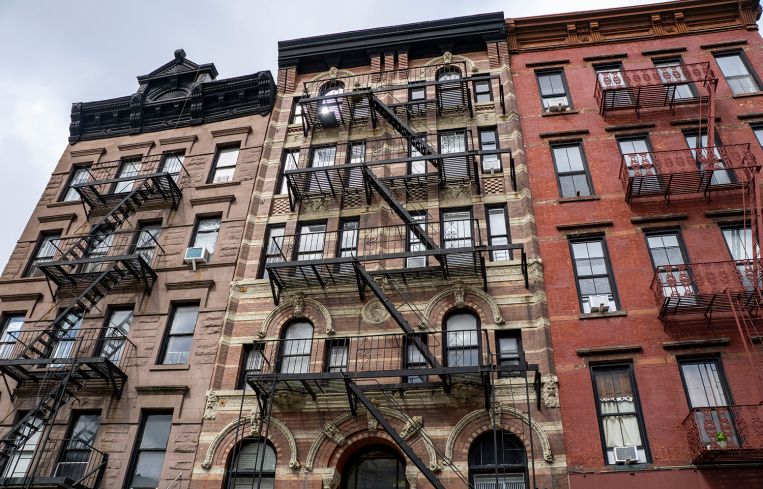New York City’s Housing Crisis: Here Are the Policies and Moves For Solving It
By Robert Knakal September 16, 2025 11:17 am
reprints
In my last Concrete Thoughts column, I was very critical of our policymakers, who have let down New Yorkers in a big way by continuing to exacerbate the unaffordability of our city by constricting our housing supply, which exerts upward pressure on rents and makes living here less affordable.
The main condition creating this is the inherent conflict of interest between creating more housing supply, which is the easiest solution to our housing crisis, and the fact that our politicians don’t want new supply simply because it brings new voters into their districts that don’t know them, and might not vote for them. As crazy as that sounds, to a politician, self-preservation and the ability to get re-elected takes precedence over doing what’s right for their constituents.
The column also precipitated an avalanche of DMs, emails and other messages asking what steps can be taken to change the course of things and truly make New York more affordable for everyone. This column presents my solutions and answers to all of those messages.

Our rent-regulation system leads to significant inertia within our housing market and a complete misallocation of our housing resources. This inertia keeps a family of five living in a one-bedroom apartment and an individual widow or widower living in a four-bedroom all by themselves. We need changes to the system to create more supply.
Here’s what I would do:
I would immediately change the terms of City Council members from four years to six years and the terms of state legislators from two to four years — but limit all of them to one term. This would eliminate their myopic focus on getting re-elected from the second they get into office and might make them focus more on the best interests of their constituents, rather than themselves.
I would immediately restore the Major Capital Improvements (MCI) and Individual Apartment Improvements (IAI) programs. There was a 14 percent dilapidation rate in New York City in the 1970s before these programs were initiated. They motivated the private sector to invest tens of billions of dollars into the housing stock, driving that dilapidation rate down to 0.04 percent in 2019.
State legislation that year — weirdly enough, called the Housing Stability and Tenant Protection Act — marginalized both of these programs to the point where the overwhelming majority of vacated rent-regulated units are simply nailed shut, taking them out of the available supply.
Restoration of the MCI and IAI programs would have a profoundly positive impact on the market from two perspectives. First, there would be tens of thousands of apartments under gut renovation within two weeks, which would be economically stimulative. Second, it would add these units to the available supply, exerting downward pressure on rents. The quality of the housing stock will improve, and we would get relief from rapidly rising rents.
Another change that would be accretive to adding to supply would be to restore the original 421a tax abatement program. The 485x tax abatement program is a misguided piece of garbage that is only producing small buildings and a small number of new units. It tries to appease everybody rather than focusing on its main purpose, and it is not succeeding in achieving that supposed objective.
The wage requirements that were included to appease organized labor are backfiring. There are fewer jobs and less wages being earned by labor. Labor should be the biggest supporter of rolling back those excessive minimum wages (and they are the ones who can influence this change the most) as the number of jobs would rise exponentially if we had our old 421a tax abatement program back.
Within the City Council, “member deference” — wherein local members generally get final say on new projects in their districts — should be completely eliminated. If anything, every member, with the exception of the local member, should have a say, or the referendum that is potentially on the ballot in November — assigning a select committee to make these decisions — would be a much better idea.
Either that, or require that at least 5 percent of units approved in a given district every year be new construction. Most major cities across the U.S. replace about 7.5 percent of their units annually. In New York, it is historically less than 1 percent. Based on this fact, is it any surprise that rents in new construction in Manhattan are now $150 per square foot?
Lastly, I would immediately double the floor-area-ratio densities for residential projects with deed restrictions to remain rental in perpetuity. Inherently, developers want to build rental housing, not condominiums, but because land prices are so high, it leaves little option to build rental unless that particular condo market is not strong enough. Builders of residential rental housing are real estate investors, where condo developers are simply manufacturers completely at the mercy of market conditions years in the future when they make their initial bet on land. If rental densities were doubled, construction of housing units would skyrocket.
Robert Knakal is founder, chairman and CEO of BK Real Estate Advisors.



